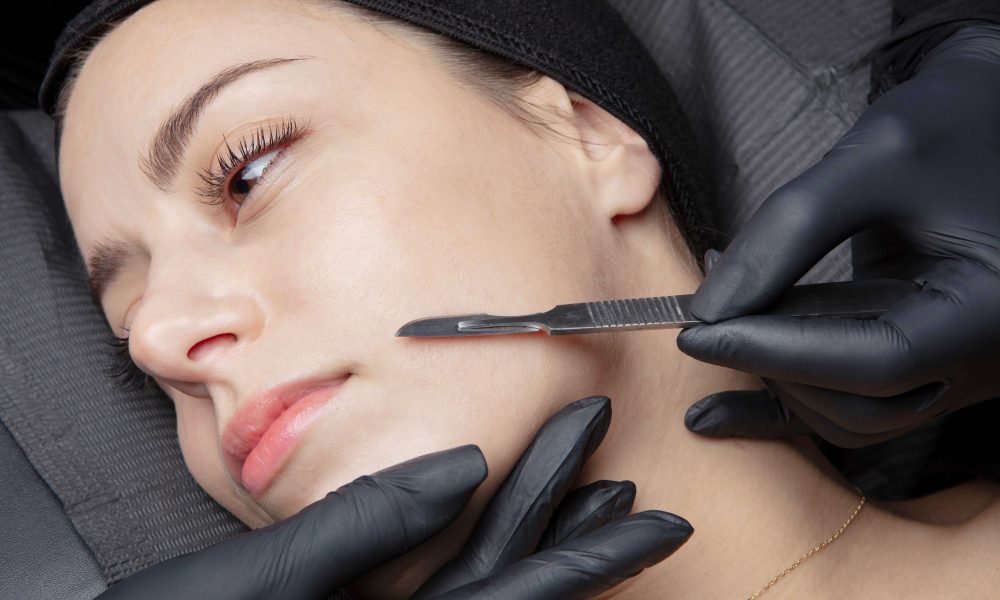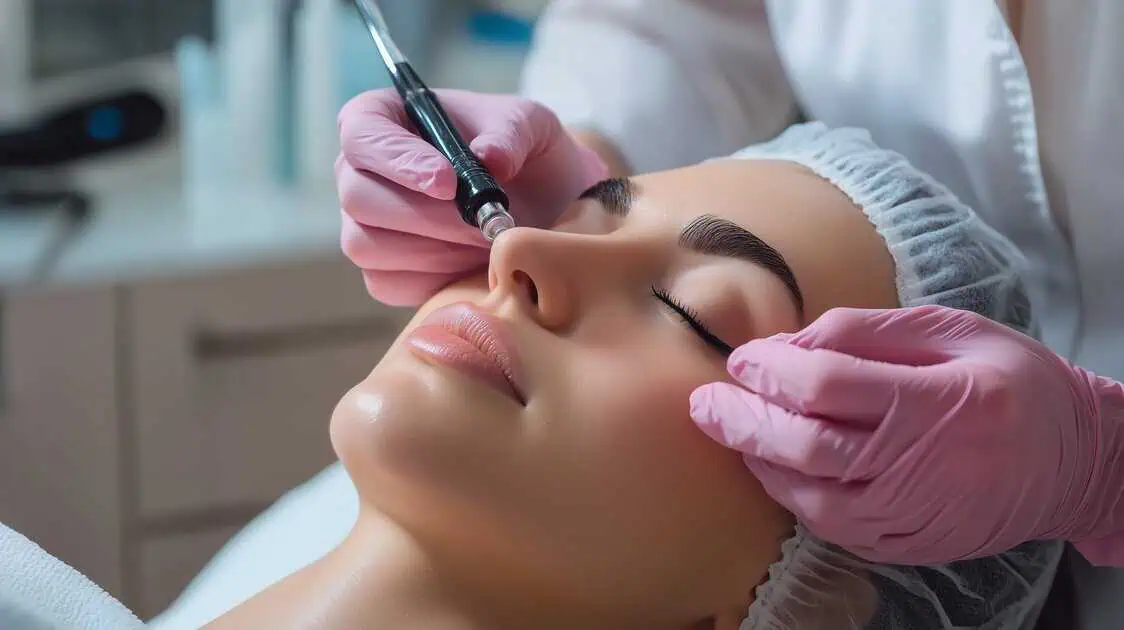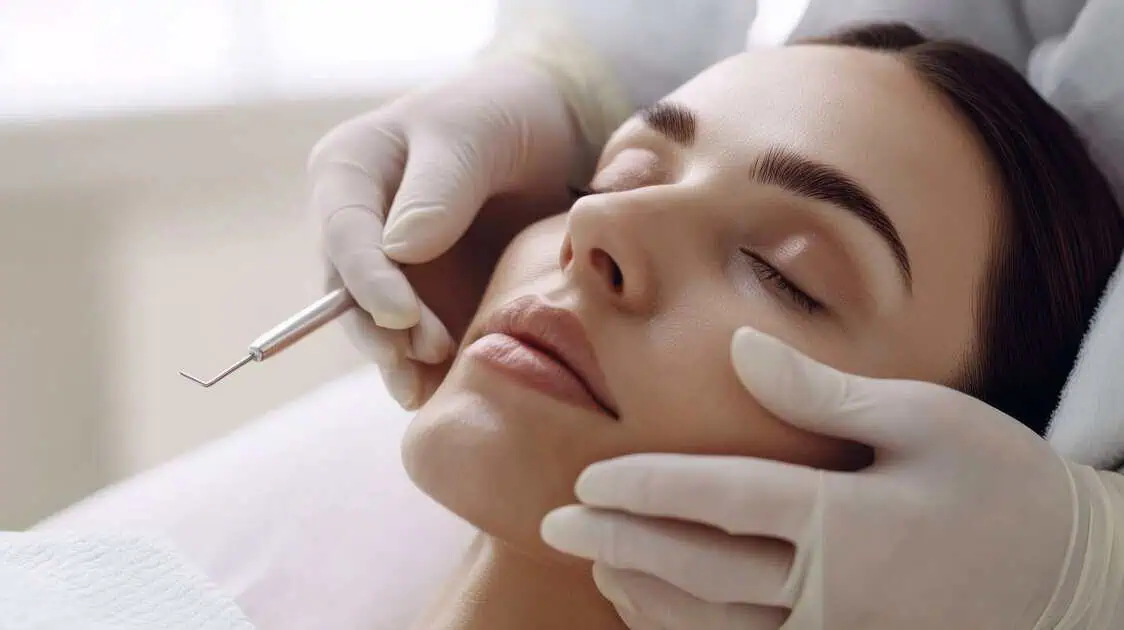A popular cosmetic procedure called dermaplaning includes scraping away the top layer of skin’s dead cells, environmental pollutants, and soft hair, often known as vellus hair or peach fuzz. With immediate results and no downtime, the procedure is exceedingly gentle and non-invasive. However, due to how the treatment goes, most people are concerned about how their hair will regrow after dermaplaning.
Will hair grow back thicker or darker after dermaplaning?
What is Dermaplaning?
Using an exfoliating blade, this procedure delicately removes the top layers of your facial skin. Dermaplaning might be compared to shaving. However, it accomplishes much more than just shaving.
As we have said, it removes the dry, dead skin cells that cause many common skin issues. Your skin will be softer, smoother, and more radiant after treatment.
How the Treatment Goes
This procedure’s basic idea is to gently slide a sterile blade across your skin while holding it at a 45-degree angle. This procedure eliminates dead skin cells, scar tissue, and other debris that can give skin a worn-out appearance. It is a gentle and pain-free treatment lasting around 30 minutes and doesn’t require any recovery time.
Every day, the irritants and chemicals in the environment come into contact with your skin. Sun damage occurs when you are outside, even on overcast days, and skin naturally ages less resistantly. These elements working together can give skin a weary and dreary appearance.
Dermaplaning removes unhealthy skin cells to reveal younger ones hidden beneath the surface.
Dermaplaning Benefits
Compared to other treatment alternatives, this is one of the least painful ways to improve your appearance. Consider this: shaving your legs doesn’t hurt, so why should this experience? Some people describe the sensation as a light tickle or brushing feeling that gently moves over the face.
Any skin type can benefit from this therapy, which is advantageous for:
- Acne scarring
- Dull skin
- Dry skin
- Sunspots
- Wrinkling
The Misconceptions About Dermaplaning and Hair Regrowth
The prevalent misconception that dermaplaning makes hair grow back thicker has a few sources. One of them is the misconception that shaving and dermaplaning are similar.
Dermaplaning is a procedure where professionals scrape the top layer of skin off using a razor-like blade at a 45-degree angle. The treatment removes vellus hair, making the skin look lighter and softer.
When you shave, the hairs are removed bluntly because they are cut straight across. However, the hairs are clipped at an angle during dermaplaning so that they regrow tapered and soft. Because of the contrast between the regrown hair and a smooth, exfoliated complexion, hairs appear darker when they return.
Additionally, especially if their hair is darker, patients soon adjust to the smooth, hairless look and forget what their face looks like with peach fuzz. They believe that it thickens up again because of this.
How Will Hair Grow Back After Dermaplaning?
Patients frequently believe that their facial hair would regrow thicker and darker following dermaplaning. We want to reassure you that this is untrue.
Only hormonal changes or imbalances can cause a person’s hair to change color or thickness. For instance, menopause has caused some women’s hair to become thicker. Your facial hair should grow back looking like it did before the treatment, whether you shave or use dermaplaning equipment.
Because dermaplaning cuts it straight across during your treatment, your hair may feel slightly different as it returns, which will take around a week. Although it may appear harsher to you, this is mere because hair has a blunt end when it develops. Every time you choose to dermaplane after that, your hair will remain the same color and texture as before.
What You Need to Know About Vellus Hair
Vellus hair is the term for the hair that dermaplaning removes from your face. It’s most likely better known to you as peach fuzz. This soft, transparent growth first occurs in adolescence.
Vellus hair is found on everyone and controls body temperature by acting as insulation and a cooling agent when necessary. It is okay to remove this hair. It even has some advantages for the face.
First and foremost, peach fuzz prevents makeup from applying evenly and gives you the desired smooth, dewy look. Additionally, skincare products can function more efficiently if they don’t have to break through the barrier that hair and dead skin cells create. The removal of vellus hair ensures your serums and moisturizers will benefit you more significantly.
How Dermaplaning is Different from Shaving
Some patients hold the same belief that shaving stimulates hair regrowth. However, we want to clarify that any therapy that removes hair from your body will return the same color and texture. Simple biology is in action here.
Dermaplaning and shaving have a similar appearance, but the latter is more comprehensive, safe for the skin’s surface (you don’t have to worry about nicks or cuts), and effective for sensitive skin. Shaving is more effective for removing long, thick patches of undesirable hair. Additionally, it cannot reduce the appearance of fine lines or acne, nor does it alter skin tone or texture.
How to Deal with Hair Regrowth After Dermaplaning
After dermaplaning treatments, your hair won’t grow back thicker or darker, but you could worry about the slight amount of stubble you feel. We have a few suggestions to address this issue.
Keep up with your dermaplaning treatment schedule first. Generally speaking, you should schedule a dermaplaning facial once per month.
Second, take heed of your skincare and exfoliation routine between treatments. An accumulation of dead skin or other debris may cause some of the lumps and flaws you may mistake for hair stubble.
Last but not least, your aesthetician might suggest an alternative method of hair removal, such as laser hair removal, if you have places where coarse hair is present.
Last Word
Dermaplaning is a noninvasive, painless treatment that can give your skin a revitalized appearance and feel. Additionally, it is brief—about 30 minutes—and easily accommodates practically any schedule. Furthermore, it is so safe that we advise it to virtually everyone.
Get all the answers you need about dermaplaning by consulting Bella Rose Aesthetics. You can contact us at 317-349-3050 or info@bellaroseaesthetics.com.





